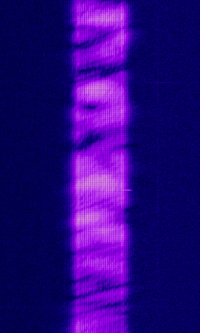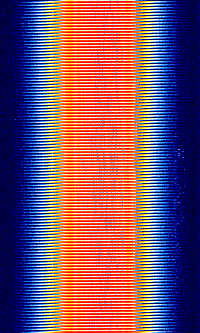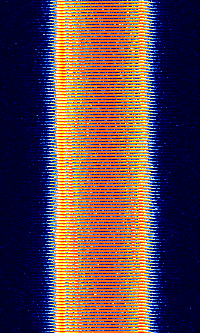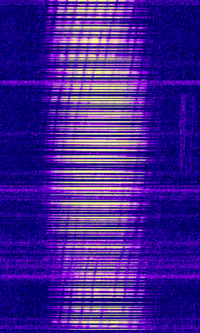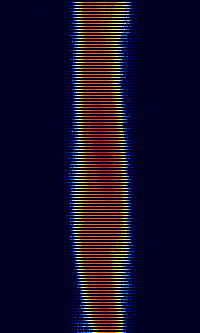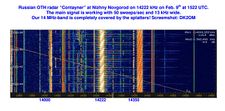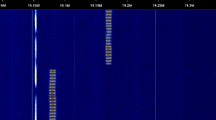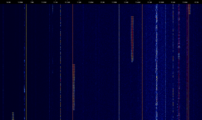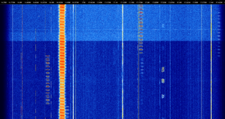29B6 'Kontayner' OTH Radar
| Radars | |
|---|---|
| Military: 🇮🇷 🇷🇺 'Ghadir' OTH Radar (Iran/Russia "Rezonans") - 🇷🇺 29B6 'Kontayner' OTHOver The Horizon (very long range) Radar (Russia) - 🇷🇺 Podsolnukh 'Sunflower' Radar (Russia) - 🇨🇳 Chinese 'Foghorn' OTH radar (China) - 🇨🇳 'OTH-SW' OTH Radar (China) 🇦🇺 Jindalee Operational Radar Network (JORN) (Australia) - 🇨🇾 🇬🇧 PLUTO II OTH Radar (Cyprus/UK Base) - 🇺🇸 Relocatable Over-the-Horizon Radar (ROTHR) (US) Civil: 🌎 🌊 CODAR (Worldwide) - 🇺🇸 High Frequency Active Auroral Research Program (HAARP) (Alaska, US) *VHF |
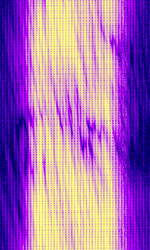 | |
|---|---|
| Frequencies | 6.1 MHz,32 MHz |
| Frequency Range | 6.1 MHz - 32 MHz |
| Mode | USB |
| Modulation | Pulsed,FMOP |
| ACF | 25 ms |
| Emission Designator | — |
| Bandwidth | 3.5 kHz,7 kHz,14 kHz,28 kHz |
| Location | Russia |
| Short Description | 29B6, nicknamed 'Контейнер' (Kontayner), is a Russian over the horizon radar. It is currently very active in Europe. The radar uses 150 antenna masts with data transmission systems, transmitters and receivers, a power station, and control buildings. It can detect high-altitude and low-altitude aircraft and missiles at very long ranges. |
| I/Q Raw Recording | Download file |
| Audio Sample | |
29B6, nicknamed 'Контейнер' (Kontayner), is a Russian over the horizon radar. It is currently very active in Europe. The radar uses 150 antenna masts with data transmission systems, transmitters and receivers, a power station and control buildings. It is able to detect both high altitude and low altitude aircraft and missiles at very long ranges.
The first 29B6 radar installation is based at Kolkino radar station. The receiving antennas are located 8 km south-west from Kovylkino, Mordovia, Russia 53.9841°N 43.8427°E. The transmitting antennas are located 300 km from receiver, 5 km north from Gorodets town, Nizhegorodskaya oblast', Russia 56.69328°N 43.48625°E.
As of 2018 or 2019, the Gorodets transmitter station has been dismantled and a new transmitter built near the Kovylkino receiver. [1] Another 29B6 facility has been planned to be built in Kaliningrad. [2]
29B6 uses pulsed modulation with Frequency Modulation On Pulse (FMOP), unlike many other OTHOver The Horizon (very long range) radars which tend to use Frequency Modulated Continuous Wave (FMCW). Like some other OTHOver The Horizon (very long range) radars, the 29B6 can transmit multiple beams simultaneously on multiple frequencies.
As of about 2019, the 29B6 almost always transmits 40 pulses/sec which gives an unambiguous range of 3750 km. Bandwidth of the signal is usually about 14 kHzKiloHertz (kHz) 10^3 Hz but it's often hard to determine accurately due to splattering that is caused by its pulsed operation. Other modes may still be used but they are rarely seen.
Previously, it commonly used 50 pulses/sec (max range 3000 km), but it was also seen with 25 sweeps/sec (max range 6000 km) and 100 sweeps/sec (max range 1500 km).
29B6 can be confused with the PLUTO II radar but can be usually differentiated by its different sweep rate (40 HzHertz (Hz), unit of frequency, defined as one cycle per second (1 Hz). vs 50/25/12.5 HzHertz (Hz), unit of frequency, defined as one cycle per second (1 Hz).), slightly narrower bandwidth and sharper or rougher sound. Signal analysis will reveal pulsed operation.
Samples[edit]
| 50 pulses/sec, old | 40 pulses/sec | 50 pulses/sec, new |
|---|---|---|
50 pulses/sec
40 pulses/sec, USBUpper Side Band Modulation (Radio, referring to reception and modulation mode)Universal Serial Bus (Computer, referring to USB Ports and cables), demodulated with higher (14 kHzKiloHertz (kHz) 10^3 Hz) bandwidth
40 pulses/sec, AMAmplitude Modulation
29B6 Sounder[edit]
The 29B6 radar has a sounder signal which is used to check ionospheric conditions so that suitable transmission frequencies can be selected for the main radar.
The sounder has a bandwidth of about 10...12 kHzKiloHertz (kHz) 10^3 Hz (13-14 kHzKiloHertz (kHz) 10^3 Hz has also been reported) and transmits short pulses at a rate of 10 HzHertz (Hz), unit of frequency, defined as one cycle per second (1 Hz).. Like the main radar, the sounder uses FMFrequency Modulation on pulse, but the FMOP sweep goes downwards, not upwards. Due to its slow pulsing rate, the sounder signal sounds similar to the old, infamous Duga radar.
The sounder starts from the low end of the radar operating frequency range and hops frequencies in an ascending manner. When it gets near the other end of the frequency range, it pauses for a while and then starts its sounding run again.
Samples[edit]
| 29B6 Sounder | 29B6 Sounder, new sample |
|---|---|
29B6 sounder, USBUpper Side Band Modulation (Radio, referring to reception and modulation mode)Universal Serial Bus (Computer, referring to USB Ports and cables) demodulated with wider bandwidth
Video Examples[edit]
- Russian Container 13450 kHz
- Radar, new Russian 29B6 Radar with Sounder, 19712 and 19477 kHz, September 08, 2013, 1631 UTC
- Radar, British PLUTO and 29B6, some ways to tell them apart, February 07, 2015, 1500 UTC
- Russian OTH Radar Blasts 20 Meters
- Radar Container (29B6) (RБ6 «Контейнер») 20 Meter band
- Analysis of 29B6 by FirstToken
Additional Links[edit]
- I-56578 29B6
- 29B6 Codenamed "Kontainer"
- 29B6 OTHR Wikipedia
- 29B6 Transmitter in Russia, Google Maps
- 29B6 Recieving Antennas in Russia, Google Maps
Notes[edit]
- ↑ https://planesandstuff.wordpress.com/2020/02/25/russian-othr-29b6-konteyner-analysis/
- ↑ https://planesandstuff.wordpress.com/2020/03/23/more-konteyner/
